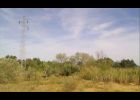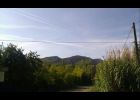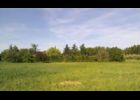Flusser hören – lesen – studieren. Der "Flusser-Hypertext" – von der Nachgeschichte zur Vorgeschichte
On March 2, 1989, Vilém Flusser gave a lecture at the Institute for Technology Assessment and Systems Analysis. At the time, the Institue was part of the former Research Centre Karlsruhe, located in Eggenstein-Leopoldshafen, and today it is part of the Karlsruhe Institute of Technology—KIT. The topic of the lecture was “Writing for Publishing” and fitted well into the research project under study at that time: Electronic Publishing. In a subsequent project on Electronic Books, we took this lecture as the basis of a hypertext offering users three modes of getting acquainted with Flusser’s ideas: Listening to his recorded speech, reading the transcript, and studying in detail his arguments by following the links into an extended system of explanations, ordered in three layers “beneath” the text. There is a publication (in German) that describes this hypertext and two other prototypes (Böhle et al. 1997). The author goes back to the old files and tries to unfold the obvious and hidden rational of this prototype. At the end, he dares to dream of a science fiction in which Vilém Flusser is a member of the research project, therefore exploring (and suffering) with colleagues, new writing and reading technologies. What kind of Flusserian philosophy would have emerged then?
Übersetzung, Wissen und Kultur in der freudschen Psychoanalyse und im Werk Vilém Flussers
This article aims to present Sigmund Freud and Vilém Flusser not only as two thinkers with biographical similarities, but mainly as two intellectuals of converging ideas. Both developed a critical analysis of the human unease (Unbehagen) mediated by the symbolic, and both, each in his own way, tried to find solutions to deal with this unease using language as an instrument. Both saw in translation an important instrument to overcome cultural boundaries.
Verso una teoria dei gesti
In his work “Gesten. Versuch einer Phänomenologie,” Flusser investigates the concept of gestures. Starting from a first definition of gestures, which explores the “causality” of movements, Flusser then discusses the meaning of the concept “gesture” in the broader context of culture as a symbolic expression. In this essay, we discuss Flusser’s view on gestures by studying them with respect to their function and meaning in communicative processes, both obvious and hidden. From a semiotic point of view, we analyse Flusser’s thoughts on the function and the properties of gestures and provide a definition of “gesture”, which reflects its cultural, symbolic, and significant aspects. Particular emphasis is given to the role of gestures in communicative processes and their imbedding in the cultural environment.
Vampyroteuthis Infernalis: l’alterità capovolta
The Vampyroteuthis Infernalis is a text that defies labels by layering scientific, philosophical, and anthropological perspectives. We should read it “lengthwise” in order to share the vision of this brilliant metaphorical story and post-human fairy tale. Flusser eradicates points of view that are rusty, ancient and anthropocentric. In this, he sheds a beam of light not only on the ideas but also on the method, and the point of view. Throughout the book, the literary device turns out to be a kind of powerful “antivirus” against the rhetoric and the morals of our “a priori”. The Vampyroteuthis emerges where we dive: it is the dark side, the sleep of reason and the monster of dreams; it is the common unconscious, the fear of the unknown, the repression of drives; it is what is submerged by science and religion; it is the black, the different, the other; it is what we would like to suppress in ourselves, but actually, if this emergence is slow and conscious, the subsequent integration will be healthy and productive. It will be the utopia of new humans who look out and see themselves.
Flusser in Robion
Robion, a small town in the Provence of southeastern France, was the second exile of Vilém Flusser and his wife. They lived there from the early 70s until his death in the early 90s, and after living for a long period in the city of São Paulo. This new but well known cultural landscape attracted a lot of philosophers, writers and artist and represented for Flusser a so called anti-Brazil, some kind of paradise in a strait opposition to the “desert” landscapes of Brazil. Here he found a prosperous landscape where several points of his thinking where connected in natural and cultural ways.
Mensch oder Landschaft – was war zuerst da? Antworten aus Vilém Flussers Vogelflüge
The essay is dedicated to the relationship of nature and culture. Landscapes are formed by natural and cultural influences. Cultural influences include two components: the changes on the land made by men and the changing ideas about landscape. Landscapes are concepts; therefore they cannot exist without men. Flusser explores this theme by describing his visit to the French Jura Mountains. He outlines how, first animals and later men used the Ofenpass, a pathway in the Alps. Separated river valleys were transformed from natural areas to landscapes, which can be regarded as men’s homes.



